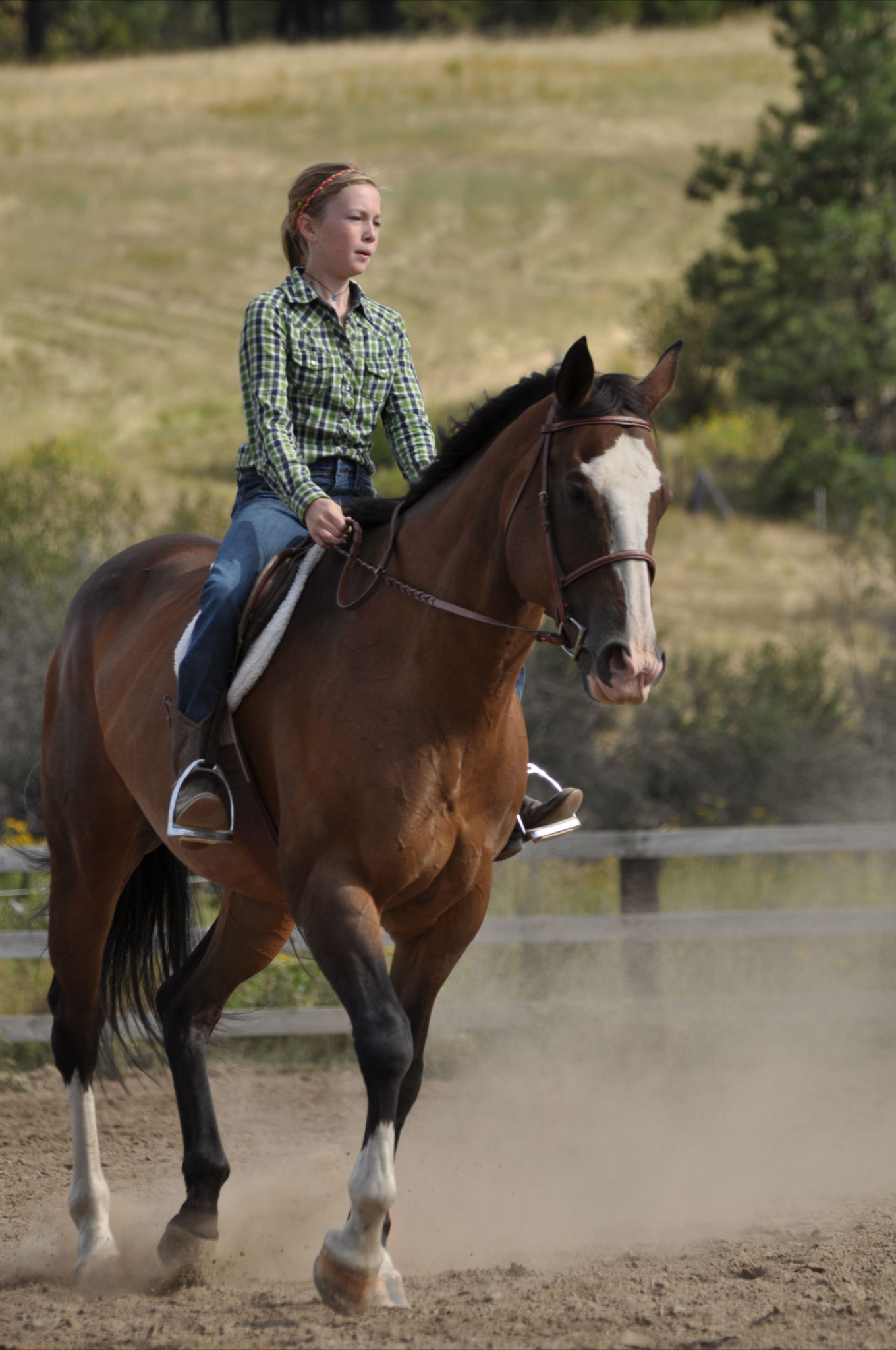 Jory Chittenden riding an equitation pattern on her horse, ShawneePattern work is an integral part of horsemanship. Patterns teach both horse and rider a myriad of skills and can easily be modified according to ability. I like to incorporate pattern practice with all my clients; not only for those who show and will be inevitably asked to perform pattern work, but also for those who are working toward establishing a deeper level of connection and control with their horses. Below are three skill levels and a rationale for using pattern work at each level.
Jory Chittenden riding an equitation pattern on her horse, ShawneePattern work is an integral part of horsemanship. Patterns teach both horse and rider a myriad of skills and can easily be modified according to ability. I like to incorporate pattern practice with all my clients; not only for those who show and will be inevitably asked to perform pattern work, but also for those who are working toward establishing a deeper level of connection and control with their horses. Below are three skill levels and a rationale for using pattern work at each level.
Beginner Riders
Patterns are a great way to teach a rider direction control. Because of their lack of knowledge and skill, many beginning riders are more of a passenger (reactive) than a driver (proactive). The cones and obstacles give riders a visual to know they are directing their horse where they want it to go. When performing the pattern, we are not so concerned with correctness as we are with the rider getting the horse through and around the obstacles.
Intermediate/Advanced Riders
Patterns help these riders with their precision and timing. At this level of riding, we are very concerned with correctness. Are their circles perfectly round? Is their timing correct enough to stop the horse exactly with its front feet lined up with the cone? Is the horse making a transition immediately and smoothly at the cone? More intricate patterns also help improve the rider’s concentration.
Training Horse
A horse has to be able to perform the maneuver without the cones and obstacles before you add them to a pattern. For example, we wouldn’t ask a colt to lope a perfectly round circle through sets of cones if we couldn’t guide it on a decent circle first. Eventually, patterns are a great training tool because we are expected to perform the maneuver/transition at the marker, forcing us to find the holes in our colt’s training.